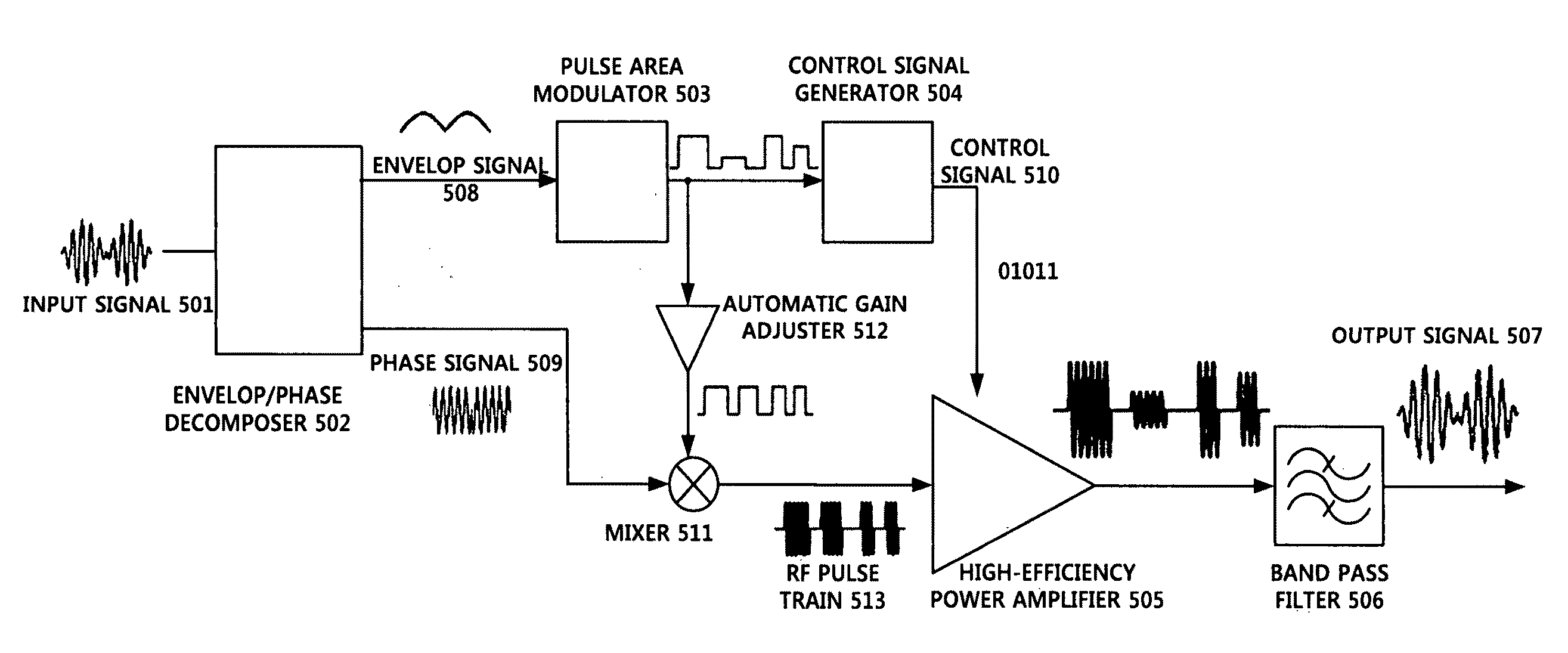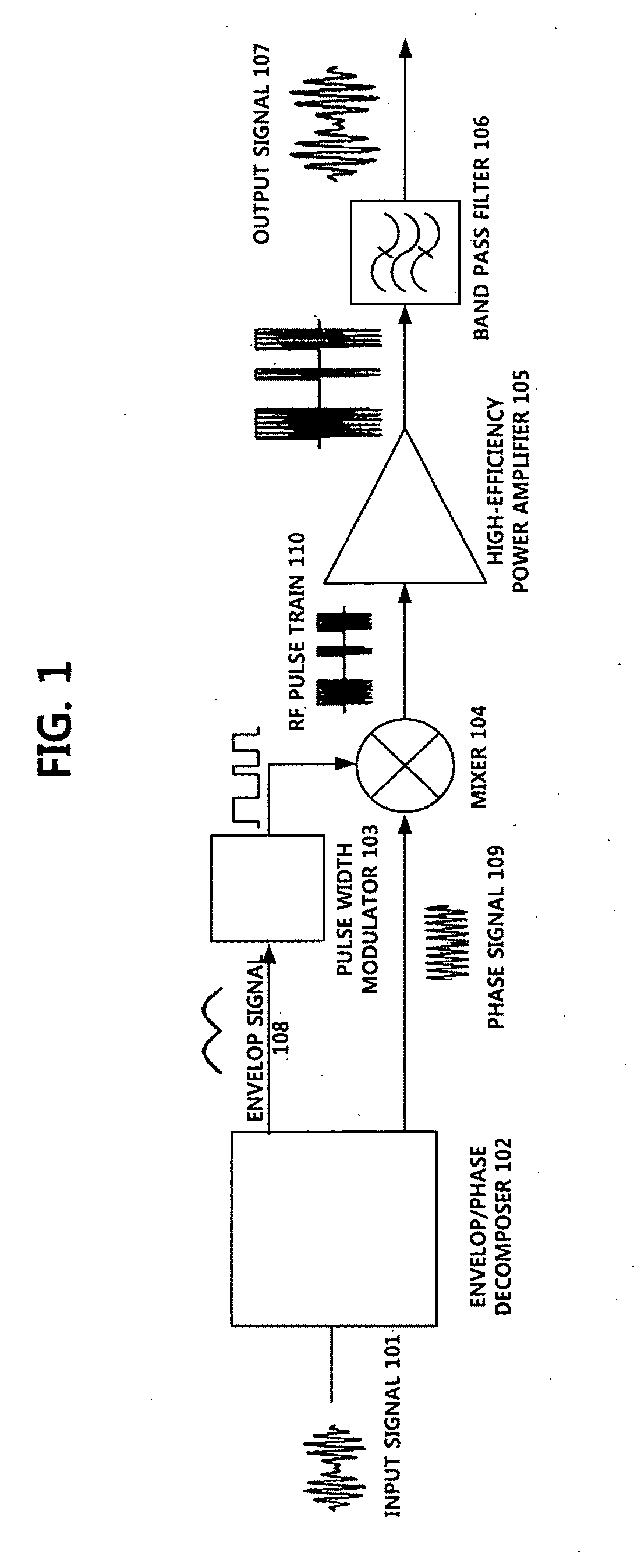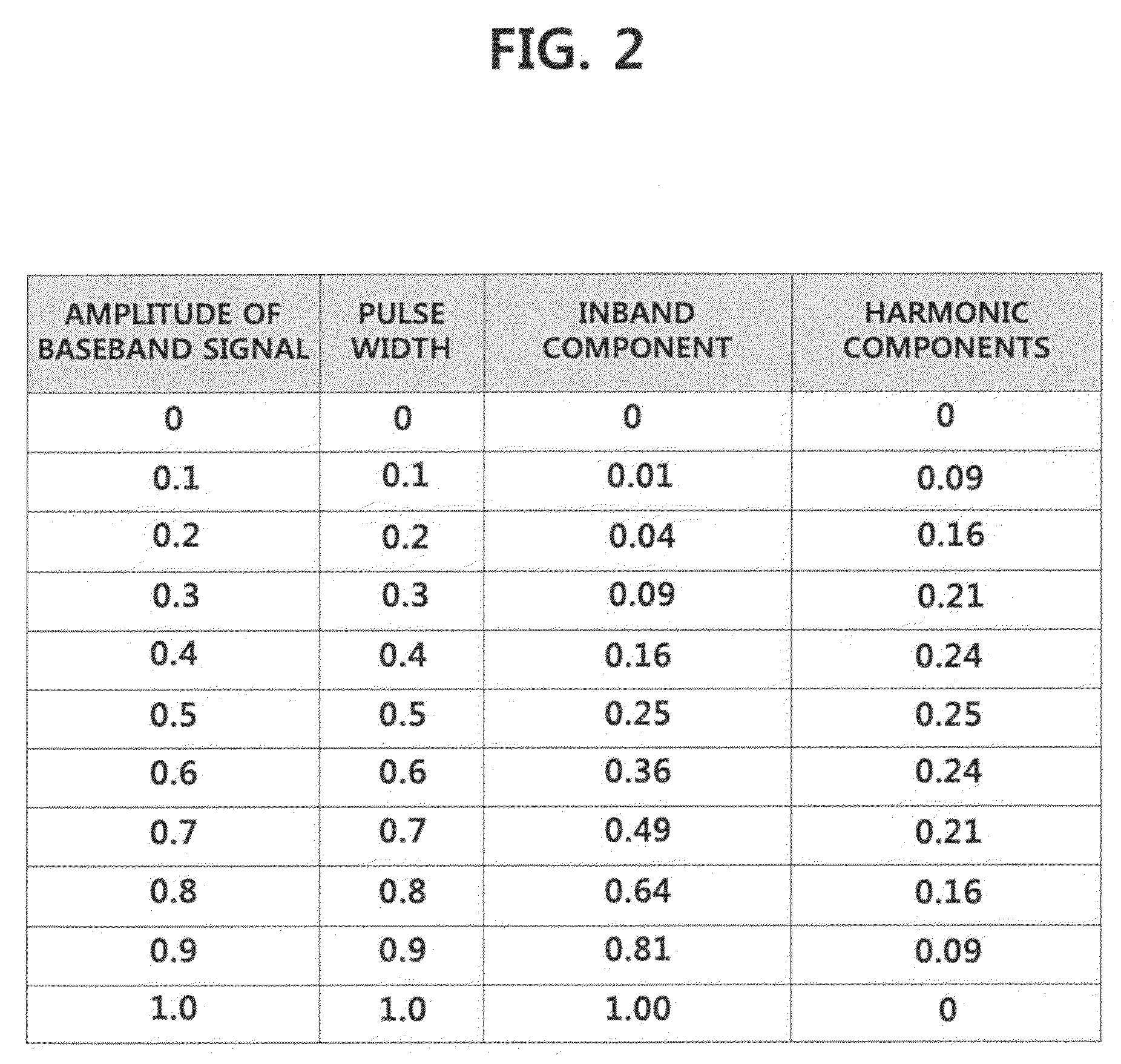Pulse Area Modulation and High-Efficiency Linear Power Amplifier System Using the Same
a technology of pulse area and power amplifier, applied in the direction of amplifiers, dc amplifiers with modulator-demodulator, amplifiers, etc., can solve the problems of poor efficiency of class ab amplifier, limited capacity and the size of battery cells, and low-power circuits for mobile terminals. , to achieve the effect of reducing harmonic components
- Summary
- Abstract
- Description
- Claims
- Application Information
AI Technical Summary
Benefits of technology
Problems solved by technology
Method used
Image
Examples
Embodiment Construction
[0019]To fulfill the above-described objects, the present invention proposes a pulse area modulation (PAM) technique. The efficiency of a power amplifier can be enhanced by using the PAM by reducing harmonic components. Herein, the term “PAM” (pulse area modulation), which is newly proposed in the specification of the present invention, should be distinguished from the well-known term “PAM” (pulse amplitude modulation).
[0020]The PAM is a technique of modulating an input signal such that a modulated pulse has an area, which is proportional to the amplitude of the input signal. Unlike the well-known PWM, whose pulse has a fixed height, the PAM has at least two different pulse heights, which are determined by considering the amplitude of the input signal. Thus, both the width and the height of the modulated pulse vary in the PAM technique as the amplitude of the input signal varies in the time domain, while only pulse width varies in the PWM technique. Though both waveforms have same p...
PUM
 Login to View More
Login to View More Abstract
Description
Claims
Application Information
 Login to View More
Login to View More - R&D
- Intellectual Property
- Life Sciences
- Materials
- Tech Scout
- Unparalleled Data Quality
- Higher Quality Content
- 60% Fewer Hallucinations
Browse by: Latest US Patents, China's latest patents, Technical Efficacy Thesaurus, Application Domain, Technology Topic, Popular Technical Reports.
© 2025 PatSnap. All rights reserved.Legal|Privacy policy|Modern Slavery Act Transparency Statement|Sitemap|About US| Contact US: help@patsnap.com



